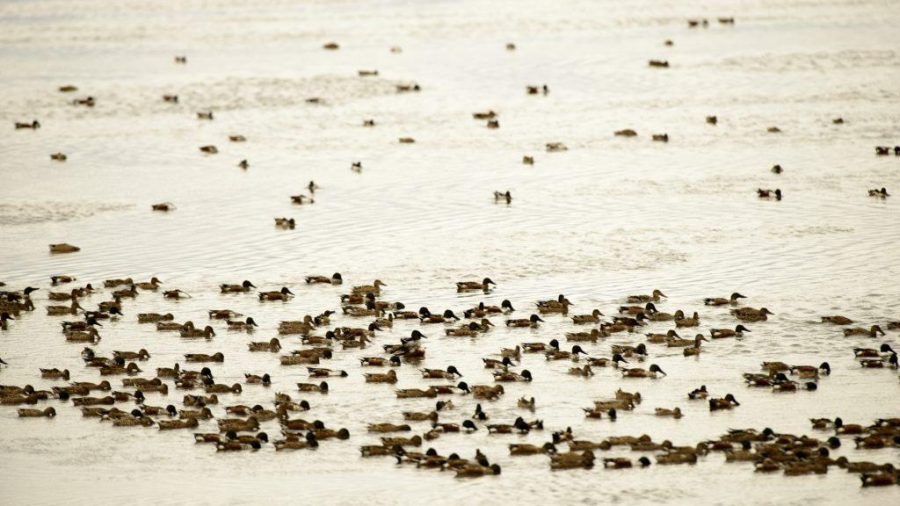Despite its seemingly dead appearance at first glance, the Great Salt Lake is a fascinating ecosystem rich with life. It happens to be one of the most important bird migration stops in western North America. Thanks to the mostly arid Utah climate, birds congregate around bodies of water, making the vast lake home to millions of shore birds, water birds, songbirds, and birds of prey, such as bald eagles and falcons. Birding enthusiasts and conservationists flock to the lake from all over to experience its diverse and colorful bird life. In late summer, watch in awe as giant flocks of red necked phalaropes create their signature whirlpools in the salty waters, stirring up brine shrimp and other invertebrates to feast on before their long journey to South America. In the winter, spot a majestic barn owl on the hunt catch a rabbit in its powerful talons.
One of the hotspots for bird watchers is Antelope Island. This 28,800 acre state park is open year round and hosts antelope, bison, and bighorn sheep. Don’t let the dropping temperatures fool you, now is prime time to bring your binocs and watch the show. Some birds to look for in the winter months include grebes, tundra swans, horned larks, and chukars.You’ll find tundra swans aren’t hard to miss with their symphony of honks, while horned larks are a bit more subtle with soft calls, sometimes seen singing with their yellow colored faces and white underbellies visible while perched on rocks or signs.
Before you embark on your birding adventure, you’re going to need some essentials.
Binoculars: These will transform tiny flying specks into colorful and detailed patterns and feathers. A pair can range from $30 to upwards of $500. With a bit of research you can find the best pair for your needs.
A field guide: Specifically a field guide with pictures, so you know what you’re looking at. You can get a reputable and relatively low cost guide for under $10 from National Geographic or the National Audubon Society. You can also find guides regional to Utah for under $5 at most bookstores.
A camera: One with a telephoto lens if possible. Short-range portrait lenses don’t capture detail from a distance, much like your naked eye.
If you are interested in going full-on bird-nerd and learning more about the Great Salt Lake and its feathered friends, the Salt Lake Audubon Society is hosting their biennial Friends of The Great Salt Lake Birds n’ Bites: Highlights of the 2016 Great Salt Lake Issues Forum on Tuesday, Nov. 15, 7:00 p.m., at the Tracy Aviary Education Building.
You can also check out the Great Salt Lake Audubon official website for a calendar of events, including a number of guided field trips with bird watching experts.


